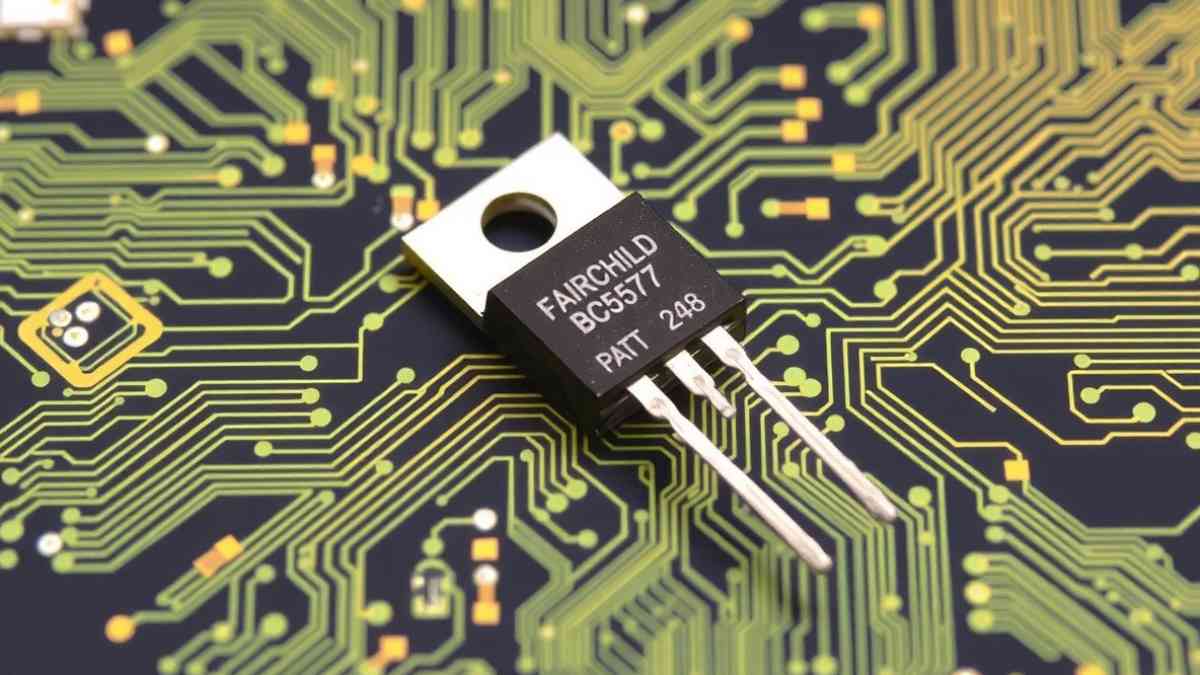Fairchild BC557BTA Explained: A Trusted PNP Transistor for Everyday Electronics

In the world of electronics, certain components earn a reputation for being dependable, accessible, and versatile. One such component is the Fairchild BC557BTA. Whether you’re a seasoned electrical engineer or a passionate hobbyist, you’ve likely encountered this compact yet capable transistor in more than one project. It’s not flashy, but it’s proven. Understanding what makes the BC557BTA so commonly used helps deepen one’s grasp of circuit design and transistor functionality.
What is the Fairchild BC557BTA?
The Fairchild BC557BTA is a PNP bipolar junction transistor (BJT) designed primarily for general-purpose low-current, low-voltage switching and amplification. Originally manufactured by Fairchild Semiconductor, which later became part of onsemi, this transistor belongs to the well-known BC557 family. The suffix “B” indicates its DC current gain (hFE) falls within a specific range, typically 200 to 450, making it ideal for applications where moderate gain is desired.
Key Specifications
This transistor is small, but its electrical specifications pack a punch for its class. The collector-emitter voltage (Vceo) is rated at -45V, allowing it to handle a decent voltage range in reverse polarity typical for PNP types. The collector current (Ic) has a maximum of -100mA, which, though not large, is sufficient for many control and signal circuits. It also has a transition frequency (fT) of 150 MHz, meaning it’s fast enough for audio and some radio-frequency applications.
The TO-92 package makes it physically easy to mount and solder in through-hole boards. This, combined with the simple three-pin configuration—Collector (C), Base (B), and Emitter (E)—ensures that even beginner hobbyists can implement it with ease.
Pinout and Layout
In its TO-92 casing, the transistor’s flat face typically features the pins arranged as: Collector on the left, Base in the center, and Emitter on the right (when viewed from the front). This straightforward pinout contributes to its user-friendliness in breadboarding and prototyping.
Main Features
One of the standout characteristics of the BC557BTA is its low noise output, making it ideal for audio preamplifier stages and signal processing circuits. Another benefit is its high current gain, enabling effective amplification without requiring large input signals.
This transistor is also known for low saturation voltage, which means it can operate efficiently with minimal power loss. It is stable across a range of temperatures and exhibits high reliability, even in moderate stress conditions. The “BTA” in its part number often refers to tape and ammo packaging, relevant to automated assembly lines, but the transistor itself is identical to other BC557B variants in performance.
Benefits of the BC557BTA
There are numerous reasons why the BC557BTA remains a staple in electronics design. First and foremost is its cost-effectiveness. It is widely available from multiple vendors and often sold in bulk, making it accessible for large-scale use. Secondly, it integrates well in low-power circuits, helping to control signals or switch small loads without requiring heat sinks or protection circuits.
The BC557BTA also fits neatly into educational projects. Due to its straightforward behavior and well-documented characteristics, it’s often found in electronics training kits or DIY Arduino applications. Lastly, its general-purpose design means it can easily replace or substitute other similar PNP transistors without redesigning the entire circuit.
Common Applications
You’ll find the BC557BTA in various practical applications. It’s used in audio amplifier circuits, particularly in the input and gain stages due to its low noise. In signal amplifier circuits, it plays a role in boosting weak analog signals. It’s also a preferred choice in low-current switching, such as toggling LEDs or relays in a control logic system.
Other uses include voltage regulation, where it helps in feedback loops to control the voltage in power supplies. In microcontroller circuits, it’s often paired with NPN transistors to form complementary push-pull stages or Darlington pairs for increased gain.
Circuit Integration and Usage
Using the BC557BTA in a circuit is relatively straightforward. Since it’s a PNP transistor, the emitter is connected to a higher voltage than the collector. The base must be held lower than the emitter (typically by 0.6V to 0.7V) to turn it on.
For example, in a simple LED control circuit, the base is driven through a resistor from a microcontroller pin. When the pin goes LOW, the base-emitter junction becomes forward biased, allowing current to flow from emitter to collector, turning on the LED connected to the collector.
Best Practices and Considerations
While the BC557BTA is forgiving, there are some key points to remember. Always use a base resistor to limit the base current and prevent damage. Also, ensure that the collector current never exceeds -100mA and that the voltage limits are respected.
Thermal management isn’t usually a major concern, but if the transistor is driving a near-maximum load continuously, it’s worth considering spacing and minimal heat sinking. Protection diodes may also be employed if switching inductive loads to guard against voltage spikes.
Comparable Alternatives
When sourcing or designing with the BC557BTA, you may come across similar variants like BC557A or BC557C, which differ mainly in current gain. The “A” grade has the lowest gain range (110–220), “B” (your variant) has medium (200–450), and “C” offers the highest (420–800).
For circuits requiring an NPN equivalent, the BC547 or BC548 serves as the counterpart, often used together in push-pull or switching arrangements.
Market Availability and Selection Tips
The BC557BTA is easy to obtain from reputable electronics suppliers like Digi-Key, Mouser, and RS Components. It’s crucial to verify datasheets and batch markings to avoid counterfeit parts, especially when purchasing in bulk from unfamiliar sources.
When buying for production or repeated prototyping, look for original onsemi or Fairchild-branded versions to ensure consistent performance. Always compare product documentation to confirm ratings, especially if sourcing from international vendors.
Conclusion
The Fairchild BC557BTA stands out as a reliable, affordable, and adaptable PNP transistor. Its broad use across countless applications—from basic switching to sensitive audio amplification—proves its effectiveness. Its characteristics make it not only a good learning tool but also a trusted part of many professional designs.
Whether you’re building a small-signal amplifier, working on a hobbyist kit, or needing a dependable part for everyday electronic use, the BC557BTA fits the bill with ease and consistency.
Discover how the BC557BTA can elevate your next circuit—start building with confidence today.



